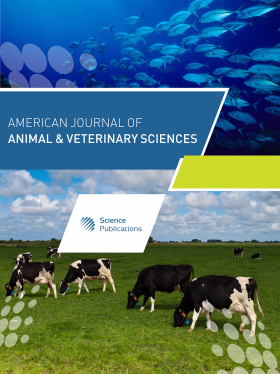The European Wild Boar (Sus scrofa) as a Reservoir of Tuberculosis: Ecological Drivers and Management Implications
- 1 Local Health Authority, ASL, 71121 Foggia, Italy
- 2 Department of Health Sciences, University of Catanzaro Magna Græcia, 88100 Catanzaro, Italy
- 3 Department of Veterinary Medicine and Animal Productions, University of Napoli Federico II, 80100, Naples, Italy
- 4 Sbarro Health Research Organization ETS, 10060, Candiolo (TO), Italy
- 5 Local Health Authority, ASL, 86100, Molise Region, Campobasso, Italy
- 6 Department of Biology, Sbarro Institute for Cancer Research and Molecular Medicine, Center for Biotechnology, College of Science and Technology, Temple University, Philadelphia, PA, United States
- 7 Department of Medical Biotechnology, University of Siena, 10100, Siena, Italy
Abstract
Bovine tuberculosis (bTB), an infectious disease primarily caused by Mycobacterium bovis and other members of the Mycobacterium tuberculosis complex, represents a significant challenge to both animal and public health. Despite successful control programs in numerous regions, the presence of wildlife reservoirs, notably wild boar (Sus scrofa), impedes complete eradication and sustains disease propagation. bTB prevalence varies across Europe, with higher rates in regions like southern Italy and Spain, influenced by intensive livestock systems, wildlife-domestic animal interactions, and environmental conditions favoring Mycobacterium bovis survival and transmission. Wild boar and other ungulates are key Mycobacterium bovis reservoirs, maintaining infection within wildlife and facilitating cross-species transmission to livestock. Shared grazing areas and resources exacerbate pathogen spread, highlighting the need for integrated control strategies addressing both wildlife and domestic animals. Effective bTB management requires a comprehensive approach encompassing surveillance, vaccination, and targeted control measures for both populations. This involves monitoring wildlife, implementing biosecurity protocols to minimize cross-species transmission, and exploring wildlife-specific vaccination strategies. In wild boar-prevalent regions, reducing their role as Mycobacterium bovis reservoirs is crucial to limit zoonotic and interspecies transmission. Understanding wild boar population dynamics and interspecies interactions is essential for ongoing efforts to control this zoonotic disease. This narrative review of the scientific literature will analyze these various aspects to provide a current picture of the situation. Meaningful solutions are proposed to reduce the risk associated with this phenomenon.
DOI: https://doi.org/10.3844/ajavsp.2025.287.304

- 25 Views
- 7 Downloads
- 0 Citations
Download
Keywords
- Tuberculosis
- Wild Boar (Sus scrofa)
- Animal Reservoir
- Zoonosis Disease
- One Health
